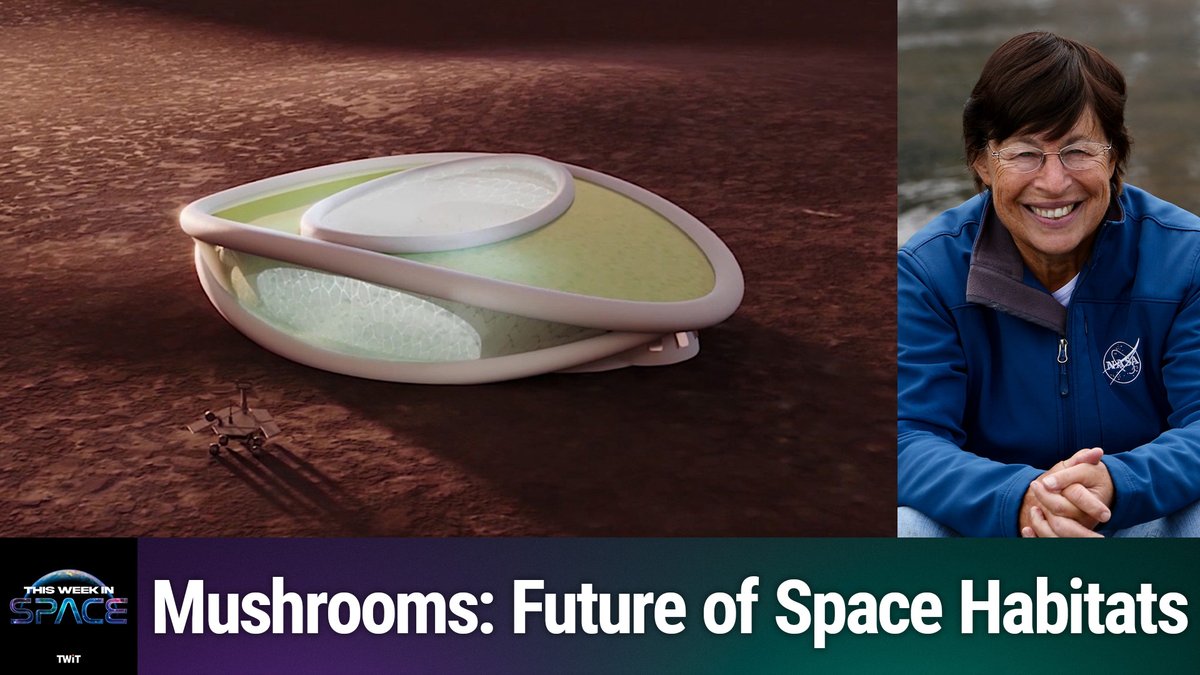Explore the cutting-edge research on using mushroom mycelia to build habitats for human settlement on Mars. Mycelia, the underground network of fungal threads, could hold the key to sustainable Martian living. Discover how NASA scientists are leveraging this natural material to create bricks, shaped structures, and even an ‘astropharmacy’ for future Mars missions.

Unlocking the Potential of Mushroom Mycelia for Martian Habitats
On the latest episode of the ‘This Week In Space’ podcast, host Rod Pyle and Space.com Editor-in-Chief Tariq Malik dive deep into the innovative use of mushroom mycelia as a building material for Martian habitats. They sit down with Dr. Lynn Rothschild, a scientist at the NASA Ames Research Center, to explore how this organic material could revolutionize the way we approach space exploration and settlement.
Dr. Rothschild has been working on this concept for years, and her groundbreaking research has caught the attention of NASA’s NIAC (NASA Innovative Advanced Concepts) program, which has awarded her no less than five grants to further study the possibilities. The team discusses how mycelia can be used to create bricks, shaped structures, and even an ‘astropharmacy’ – a system that could provide essential compounds needed by the crew of a Mars mission.
The podcast delves into the versatility and sustainability of this natural material, highlighting its potential to transform the way we think about Martian habitats. As we continue to explore the Red Planet, the ability to utilize local resources like mushroom mycelia could be a game-changer, reducing the need for heavy, resource-intensive construction materials and potentially providing a more self-sufficient living environment for future Mars settlers.
Harnessing the Power of Fungus: From Bricks to Astropharmacy
Mushroom mycelia are not just a fascinating concept; they are quickly becoming a practical solution for Martian habitat construction. Dr. Rothschild and her team have made significant strides in demonstrating the versatility of this organic material.
One of the key applications they’ve explored is the use of mycelia to create bricks. By cultivating and shaping the fungal threads, they can produce sturdy, lightweight building blocks that could be used to construct habitats on the Martian surface. This approach not only reduces the need for resource-intensive materials but also offers the potential for on-site fabrication, reducing the logistical challenges of transporting heavy construction materials from Earth.
Beyond bricks, the researchers have also investigated the possibility of using mycelia to create more complex, shaped structures. By manipulating the growth patterns of the fungus, they can potentially mold entire habitat modules or even specialized equipment and tools. This level of customization could be invaluable in the harsh Martian environment, where flexibility and adaptability are crucial.
Perhaps the most intriguing aspect of Dr. Rothschild’s work is the concept of an ‘astropharmacy’ – a system that could harness the natural properties of mushroom mycelia to produce essential compounds for the crew of a Mars mission. The team envisions a scenario where these fungi could be engineered to synthesize specific medications, vitamins, or other critical substances, reducing the need to transport such materials from Earth.
This idea highlights the potential for mycelia-based habitats to become truly self-sustaining, providing not only shelter but also a reliable source of essential resources for future Martian settlers. As the race to establish a permanent human presence on the Red Planet intensifies, innovative solutions like these could be the key to unlocking the challenges of long-term space exploration.
The Promise and Potential of Martian Mushroom Habitats
The potential of mushroom mycelia to revolutionize Martian habitat construction is undeniable. By harnessing the natural properties of this resilient, adaptable material, scientists like Dr. Rothschild are paving the way for a more sustainable and self-sufficient approach to space exploration.
As the world eagerly awaits the first human footprints on the Martian surface, the ability to leverage local resources like mushroom mycelia could be a game-changer. Not only does this reduce the logistical challenges and resource requirements of transporting heavy construction materials from Earth, but it also opens the door to more flexible, customizable, and resilient habitats that can better withstand the harsh Martian environment.
Moreover, the concept of an ‘astropharmacy’ – a system that could produce essential compounds and medicines from the fungus – is a testament to the holistic potential of this approach. By integrating habitat construction, resource production, and even medical capabilities, mycelia-based Martian settlements could become truly self-sustaining, reducing the reliance on supplies and support from Earth.
As we continue to push the boundaries of space exploration, innovative solutions like these will be crucial in paving the way for a permanent human presence on the Red Planet. The promise of mushroom mycelia-based habitats is not just a fascinating concept, but a tangible step towards a future where the challenges of Martian living can be overcome through the ingenious application of nature’s own building blocks.
